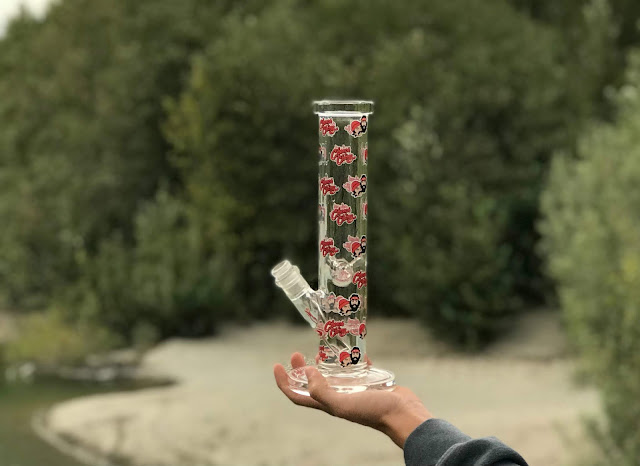Sativa vs Indica: What is the real difference?
Anyone familiar with cannabis has heard of the 2 strains: Sativa and Indica. Sativa is promoted as having energizing, and invigorating neural effects while Indica is seen as giving relaxing and sedative effects on consciousness. These beliefs are so promoted that most users have heard this information before. However, research suggests that these categories are not prescriptive and/or reliable to the chemical profile of a cannabis plant.
The reasons why the terms "indica" and "sativa" no longer predict the profile of the plant, lies in the evolution of cannabis and the cultivation of the species by growers in North America. The evolution of cannabis has a natural history, in which the plant split into the 2 distinct species. The Indica strains with short plants and wide leaves, developed in colder climates, where seasons were short and punctuated. The Sativa strains with tall profiles and long leaves, flourished in warmer climates with long seasons. For most of cannabis' history the 2 species were cultivated separately. In the 1970's this changed with the USA's war on drugs. The USA had received most of its marijuana supply at the time from Mexico, where Sativa plants were cultivated almost exclusively due to the warm climate. When the USA prevented this drug trade, Sativa was only able to grow in climates like California. However, American growers began to cross Sativa strains with the Indica strains from the colder environments of Eastern Asia to make the plants hardier and able to be grown in every state in the USA. Due to the fact cannabis is unregulated, growers also cultivated new plants to bloom faster and with larger flowers to maximize their harvest. And while Mexican cannabis growers sold the entire plant, with an average 3% THC content, American growers sold only the flowers or buds. This intense breeding increased potency dramatically to today's levels. It is this punctuated evolution has, also, made identifying strains impossible. Genetic tests to discover which species a plant's genetics originated from most, are impossible as no pure Indica or Sativa genetic profiles have ever been saved. Therefore, genetically the species are no longer separated, and any cannabis labelled either Indica or Sativa have no scientific grounds with only subjective reports from the growers on the high they induce.
So what is a more reliable way to select cannabis, other than the Indica and Sativa labels? The answer may lie in the cannabinoid profile of the plants. Cannabis contains hundreds of cannabinoids but notably the main predictors of relevance are the 2 most common cannabinoids: THC (relieves pain and nausea, also, gives the feeling of being high) and CBD (associated with reducing anxiety, pain and inflammation). This gives 3 categories of cannabis:
THC-Dominant: These strains give an energizing, exuberant high. THC dominant strains can be paranoia and anxiety provoking for some, and can have many side effects including lethargy and sleepiness.
CBD- Dominant: These strains boast medicinal effects such as pain, inflammation and anxiety relief without the high and side effects that THC gives.
THC/CDB Balanced:These strains as the name suggests, are a hybrid. They give more medicinal effects that THC-Dominant, but with a mild euphoric high that CBD-Dominant strains do not give.
Be sure to consider these factors when selecting your cannabis and if you have any questions, hit us up! Because we love weed, do you?
The reasons why the terms "indica" and "sativa" no longer predict the profile of the plant, lies in the evolution of cannabis and the cultivation of the species by growers in North America. The evolution of cannabis has a natural history, in which the plant split into the 2 distinct species. The Indica strains with short plants and wide leaves, developed in colder climates, where seasons were short and punctuated. The Sativa strains with tall profiles and long leaves, flourished in warmer climates with long seasons. For most of cannabis' history the 2 species were cultivated separately. In the 1970's this changed with the USA's war on drugs. The USA had received most of its marijuana supply at the time from Mexico, where Sativa plants were cultivated almost exclusively due to the warm climate. When the USA prevented this drug trade, Sativa was only able to grow in climates like California. However, American growers began to cross Sativa strains with the Indica strains from the colder environments of Eastern Asia to make the plants hardier and able to be grown in every state in the USA. Due to the fact cannabis is unregulated, growers also cultivated new plants to bloom faster and with larger flowers to maximize their harvest. And while Mexican cannabis growers sold the entire plant, with an average 3% THC content, American growers sold only the flowers or buds. This intense breeding increased potency dramatically to today's levels. It is this punctuated evolution has, also, made identifying strains impossible. Genetic tests to discover which species a plant's genetics originated from most, are impossible as no pure Indica or Sativa genetic profiles have ever been saved. Therefore, genetically the species are no longer separated, and any cannabis labelled either Indica or Sativa have no scientific grounds with only subjective reports from the growers on the high they induce.
So what is a more reliable way to select cannabis, other than the Indica and Sativa labels? The answer may lie in the cannabinoid profile of the plants. Cannabis contains hundreds of cannabinoids but notably the main predictors of relevance are the 2 most common cannabinoids: THC (relieves pain and nausea, also, gives the feeling of being high) and CBD (associated with reducing anxiety, pain and inflammation). This gives 3 categories of cannabis:
THC-Dominant: These strains give an energizing, exuberant high. THC dominant strains can be paranoia and anxiety provoking for some, and can have many side effects including lethargy and sleepiness.
CBD- Dominant: These strains boast medicinal effects such as pain, inflammation and anxiety relief without the high and side effects that THC gives.
THC/CDB Balanced:These strains as the name suggests, are a hybrid. They give more medicinal effects that THC-Dominant, but with a mild euphoric high that CBD-Dominant strains do not give.
Be sure to consider these factors when selecting your cannabis and if you have any questions, hit us up! Because we love weed, do you?






Comments
Post a Comment